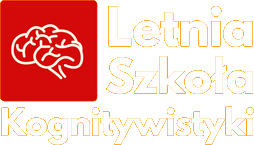- Kategorie
-
Znaczniki
Adam Wasążnik Adrianna Smurzyńska Agnieszka Czubak Agnieszka Starzyńska Albert Łukasik Anastazja Szuła Andrew Lambert Andrzej Zykubek Aneta Niczyporuk Anna Dutkowska Anna Głowik Arkadiusz Białek Arkadiusz Gut Artur Grabowski Bartłomiej Kokoszka Beata Fijołek-Soska Bomba Radosław Bożena Ronowska Dagmara Wąchocka Damian Adamowicz Damian Grzegórski Dobrosław Bagiński Dominika Kopańska Edgar Filip Różycki Fabio Squeo Frelik Paweł Gang Chen Grzegorz Polak Jagoda Bigos Joanna Jurewicz Kamil Aftyka Katarzyna Marczewska Kubiszyn Marta Liliana Kozak Maciej Kociuba Maciej Witek Małgorzata Kuśpit Marcin Lisiecki Marcin Matys Marek Bogusław Maria Kierepka Mariola Kowalczyk Mariusz Wołonciej Marta Glinka Marzena Fornal Mateusz Chról Michał Bachanek Michał Obidziński Michał Wilczewski Mira Zyśko Monika Chylińska Monika Pietrzak Muszyński Zbysław Oleg Gorbaniuk Olgierd Borowiecki Paulina Zarębska Piotr Francuz Piotr Kozak Piotr Markiewicz Piotr Przybysz Renata Łukiewicz-Kostro Robert Mirski Stanisław Popek Szura Bruni Szymon Górski Tomasz Komendziński Tomasz Stefaniuk Witold Wachowski Zbigniew Wróblewski Zbysław Muszyński Zofia Władyka-Łuczak
Present-day chatbots, such as GPT-3, show an impressive capacity to have a sensible dialogue with a human about almost any topic. However, a closer inspection of the dialogues reveals that the chatbots are unable to talk about topics requiring embodiment. In this sense the chatbots are not semantically grounded. In order to get around these problems for robots and other artificial systems, a semantics that is grounded in perception and action is required.
I present the theory of conceptual spaces as a theoretical framework that can be used for such a semantics. The spaces consist of domains most of which are grounded in perception and action. They also allow a simple way of representing natural concepts by assuming that such concepts are represented by convex regions of a conceptual space. The semantics of major word classes can be described with the aid of conceptual spaces in a way that is amenable to computer implementations.
The key semantic idea is then to use events as the fundamental structures for the semantic representations of an artificial system. Events are modeled in terms of conceptual spaces and mappings between spaces. An event is represented by two vectors, one force vector representing an action and one result vector representing the effect of the action. The two-vector model is then extended by the thematic roles so that an event is built up from an agent, an action, a patient, and a result. It is shown how the components of an event can be put together to semantic structures that represent the meanings of sentences. It is argued that a semantic framework based on events can generate a general representational framework for human-robot communication. An implementation of the framework involving communication with an iCub robot will be described.
Lecture and Workshop
Lecture
- William Benson, GPT-3: Waterloo or Rubicon? Here be Dragons, Preprint · August 2020
- Peter Gärdenfors (2019), Using Event Representations to Generate Robot Semantics 1, ACM Transactions on Human-Robot Interaction, Vol. 8, No. 4, Article 21.
During the seminar, participants will have time to focus on the details of a model of cognition based on conceptual spaces. I will lead a discussion towards the possibility of using conceptual spaces in the architecture of humanoid robots expressing emotions.
I will present ways in which emotional states can be implemented in robots, distinguishing between robots that are programmed to prioritise superficial displays of human-like emotions (Geminoid, a doppelganger used to stand-in for its human designer) and robots equipped with an emotional architecture (Kismet, a cartoon head from MIT).
A biologically inspired model based on conceptual spaces has been used to study the cognitive basis of autism. It is argued that the conceptual space of an autistic cognition contains a dense net of prototypes and consequently information processing requires readjustment. Without taking a strong position on autism, I use this example to show how the structure of the conceptual area can vary, how the density of protypes can affect chains of inference, how it consequence it can influence computation capacities and type of conclusions reachable by chains of inference. I use the example of Antonio Chella’s architecture based on conceptual spaces, implemented in social robots designed to facilitate interaction between children in and outside spectrum of autism.
I will use the knowledge about the ability to modify the density of prototypes in a conceptual space to initiate a discussion on the creation and manipulation of emotional structure in social robots.
Workshop
- Paul Dumouchel, Luisa Damiano, Living with Robots, Harvard University Press, 2017
- Introduction available at Look Inside service of Amazon and Books.google.com offers some insight as well.
- Antonio Chella, Conceptual Spaces and Autism, 2016 and a link to the Prezi presentation.
- Sherry Turkle, Why these friendly robots can’t be good friends to our kids, 2017
